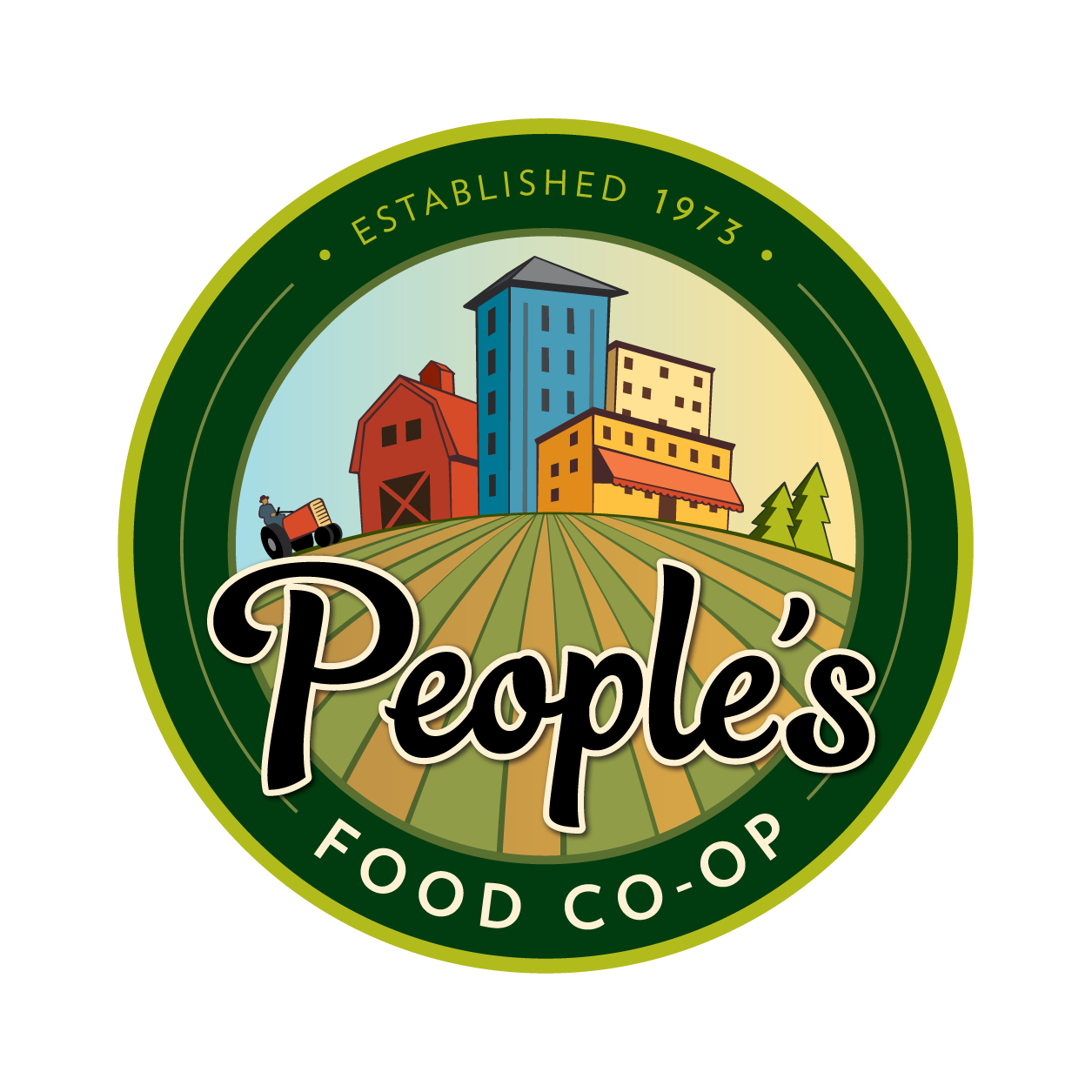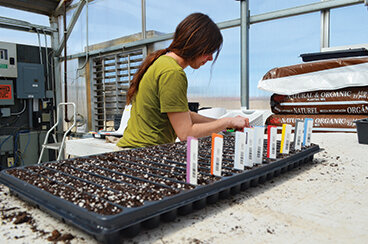Seed Savers Exchange
In the 1970s Diane Ott Whealy and Kent Whealy founded Seed Savers Exchange. Seed Savers Exchange (SSE) started, appropriately, with the gift of seed. Diane’s grandfather gave her seeds for morning glories and a tomato variety that he’d been saving. These seeds had been brought to the U.S. from Germany by her grandfather’s father.
The Whealys started SSE as a network of gardeners to share seeds and preserve heirloom varieties. SSE now has a collection of over 20,000 heirloom and other plants. In addition, Seed Savers works to preserve and transmit the cultural heritage that every seed carries. “Preserving the cultural history of our agriculture is part of our mission,” Seed Savers’ Cindy Goodner says. “Every seed tells a story.”
In early February, when PFC visited Seed Savers, Ben Johnson, Rochester’s front-end assistant manager, reported that we’d already sold over 400 packets of SSE seeds. Carly Petrausky of PFC—La Crosse notes that Seed Savers’ Amish Paste tomatoes and Lettuce Mix are always very popular and will be well stocked this spring.
John Torgrimson, executive director of SSE, describes its mission as “participatory conservation.” There are governmental organizations that work to protect our genetic heritage, notably the USDA seed bank and the international global seed vault in Svalbard, Norway, but Seed Savers Exchange is a dynamic exchange between gardeners who order seeds from the SSE catalog for their own use. SSE has 630 varieties for sale to the general public through the catalog, but it also facilitates a member-to-member gardener exchange that provides over 16,000 varieties to gardeners—who list seeds saved from their own gardens.
This national exchange of seed allows the plants the opportunity to try out new growing opportunities. Gardeners may try out seeds in new regions, or under conditions where they may not have before—discovering new applications for plants in changing climate zones. In this way, gardeners may find alternative solutions to changing growing conditions.
Village green preservation
Preserving agriculture’s biodiversity became more critical in the era following the Second World War, Torgrimson says. “Every small town used to have its own seed supplier... but after the war, farmers went to hybrid seeds and heirlooms fell out of the market. It had been 95% heirloom to 5% hybrid; that percentage switched to 95% hybrid after the war.”
Now SSE has seed historians poring over early 20th-century seed catalogs, looking for documentation of heirloom seeds that have been lost. Seed Savers Exchange does not expect that every variety will do well in the marketplace, but maintaining genetic diversity is the key.
Torgrimson tells the story of a Swiss chard, Five Color Silverbeet, a variety of chard that had been lost in Australia. Seed Savers Exchange supplied the seeds that allowed the reintroduction of the plant to the country. Some years later, the same variety had been crossbred out of existence in the U.S. and the Australians were able to return the favor.
“People breed new varieties to solve a problem,” Torgrimson says. At one time land grant universities used to do this work; now our gardeners are doing it for themselves. These varieties may not be the sweetest, or the prettiest, but they may contain the genetic component that will prove more drought- or pest-resistant. Without these varieties and their genetic information, future farmers would be limited to the monocultural genetic material (often patented) on offer from big corporations.
“Seeds are our garden heritage,” Torgrimson says. “It connects us back 10 to 15,000 years, to the beginning of agriculture. And I hope it connects us to our future as well.”
Native and non-native
Seed Savers Exchange focuses on the American gardening heritage, and they don’t make a big distinction between native and non-native species. The very first seeds taken into their collection were from Germany. As Torgrimson notes, Thomas Jefferson brought a huge number of plant varieties into the U.S. One could say the seeds and the people who brought them have been a basic part of the American experience.
The day we visited Seed Savers Exchange in early February, they were at the height of their busy season. Orders were being readied for shipment to gardeners (and to People’s Food Co-op), and they were also preparing a deposit of seeds for the international seed vault at Svalbard, Norway, above the Arctic Circle. Many people at SSE end up having multiple roles—preparing shipments in late winter, planting seedlings in spring, and harvesting in fall.
Tim Johnson, preservation manager, of Seed Savers Exchange in the seed vault.
Seed culture
Tim Johnson, preservation manager at SSE, maintains over 20,000 plant varieties. The farm regimen is organic, and they use isolation cages to minimize cross-pollination of varieties.
Many plant varieties are submitted by trained gardeners or members of Seed Savers’ gardener program, but they’ll also receive seeds from non-gardeners, who may have found a box of something in grandmother’s shed. When someone submits seeds to SSE, a portion are grown out to check that the plant genetics are healthy. Molly Thompson, one of the donation gatekeepers, reckons that of the 50 to 100 new donations in a year only about half are accepted.
The cultural component of the seeds’ history is critical to SSE’s work. When a new seed is submitted, SSE employs historians to research the provenance of the variety. Seed Savers will research the family history, and in doing so will discover the history of the plant. Seed Savers will try to determine where the seeds came from and how they were cared for. Tim Johnson describes the work as similar to putting together a family genealogy in order to track down the people who originally had the plant variety. The historians will refer to family recipes, family stories, and local histories. “A variety that’s survived well over time will perform well for us, too. We have to trust the wisdom of past gardeners,” Johnson says.
Sometimes a variety that sounds promising, like the “Gunpowder Bean,” turns out to be a standard bean that was left on the stove to cook with a sealed lid. Despite its dangerous reputation in certain regions of Pennsylvania, SSE determined that the bean had no explosive qualities at all. “Often,” Johnson notes, “it’s a game of telephone. You might call it ‘Uncle Bob’s Bean,’ but the next generation will name it ‘Uncle Bill’s.’”
All in all, SSE represents a living history of the American gardening experience. When the Whealys started the project in the 1970s, they were most likely unaware that they were responding to the postwar loss of seed suppliers. Their kitchen-table project turned out to be a key element in safeguarding an agricultural heritage that may end up providing the genetic material for the next generations.


